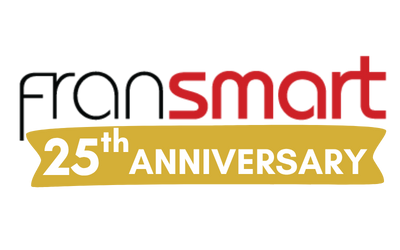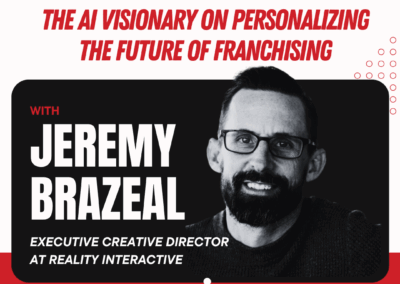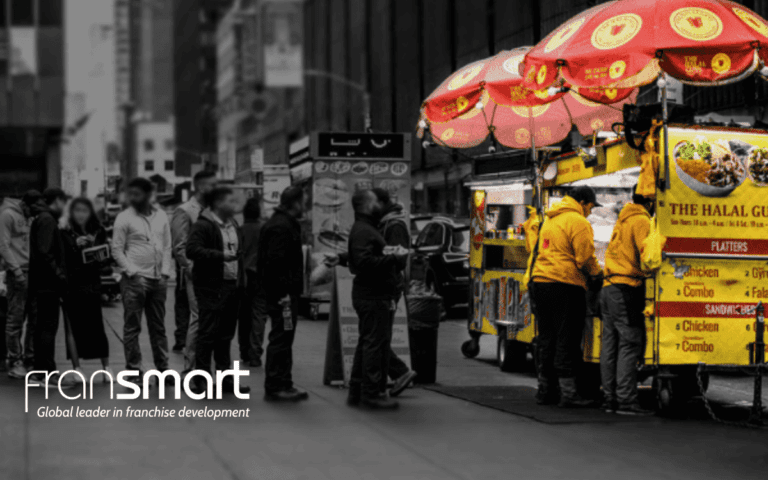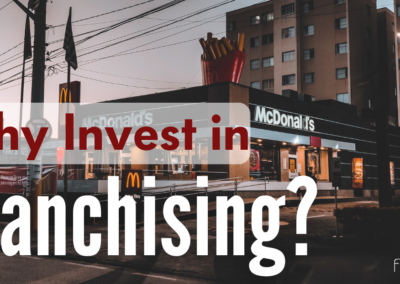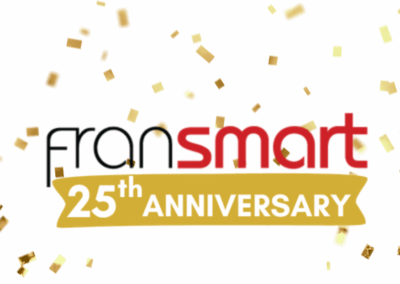I’m about 50 minutes into a late March interview with Ike’s Love & Sandwiches’ eponymous owner, Ike Shehadeh, when he drops a veritable bombshell on me.
It’s his birthday, he’s in New Orleans to celebrate the occasion before heading to Miami to help with opening a new location of Ike’s — a San Francisco-born sandwich empire that boasts more than 80 locations across six different states. He’s been kind enough to chat about anything and everything Ike’s, starting with what I expect to be a softball topic: Dutch crunch bread, something virtually everyone in the Bay Area has a soft spot for.
“I’ve got a very controversial take on Dutch,” he tells me, starting to chuckle lightly on the phone.
My curiosity piqued, I urge him on.
“So I remember growing up and eating Dutch crunch in San Francisco,” he begins. “And I hated Dutch crunch because every time I’d eat a sandwich, my mouth would be obliterated for a day or two.
“When we opened up in Arizona, when we opened up in San Diego and we opened up in Texas,” Shehadeh continued, “we were in Houston, Austin, Vegas, Reno, Hawaii, all over California, Miami. They had never heard of [Dutch crunch]. It’s probably because — this is my controversial take — is because Dutch crunch is actually not that good. It isn’t. Nobody wants to destroy their mouth after they eat. So that’s why it hasn’t left San Francisco or the Bay Area.”
We chat for a good 90 minutes, during which time I learn Shehadeh is surprisingly full of advice and he has one of the oddest resumes I’ve ever heard of.
Turns out his stance on bread is just the beginning.
What some might not remember about Shehadeh’s first sandwich shop is that it wasn’t your now-classic Ike’s. Instead, the first sandwiches Shehadeh sold were at his family’s market near the corner of 16th and Mission Streets, where Mi Tierra now resides.
It was the early 2000s and Shehadeh was 22, fresh off earning a degree in computer science and engineering at UC Davis. On one side of his family’s store was an unused deli counter, and he decided to put it to use by making sandwiches.
Shehadeh had been making sandwiches since he was five, maybe six years old. As the story goes, after repeated requests for food, his mother gave him the classic ‘here’s how to do it yourself’ mom guide, pointing him to the leftovers, showing him how to use the microwave and walking him through how to properly wash dishes. Except rather than just heat something up (Shehadeh called himself “lazy back then”), he started toasting bread, and shoving whatever leftovers they had (whether it was lamb or spaghetti) into a sandwich. He performed this ritual so often, that by seven years old he could “eat a sandwich while playing video games” and the habit (and makeshift sandwiches) followed him through college. To Shehadeh, there was a wonderful flexibility to the sandwich that worked with whatever he had on hand.
The first sandwiches from Shehadeh’s shop had competition, however. The store was near busy locations of Burger King and McDonald’s, so to compete, Shehadeh put a sign in the store window: “Why eat fast food, when you can have real food fast?” People began dropping in for sandwiches and it became popular enough that the line began winding out the door. (It also didn’t hurt that those early sandwiches cost $5, and came with a bag of chips and a drink.)
Despite the early success (and the advent of his infamous “dirty sauce”), the meager sales that accompanied 40-50 sandwiches a day couldn’t offset what the store itself was making as a market and the store went out of business in 2004.
Out of money, Shehadeh lived in the back of the store until the landlord evicted him (he wasn’t paying rent at the time), then he started living out of cars or in the back of other people’s businesses, until finding his next money-maker in 2004: professional poker.
“I entered my first tournament, it was a $40 buy-in and I had taken first place in that tournament,” Shehadeh recalled. “So I was like, ‘Oh, I could totally keep playing these’ and I kept playing and playing and it paid my rent and it put food in my stomach. … My parents didn’t enjoy that I was playing. They were like, ‘you can’t play poker’ and with most things that I found out [in life is], if you tell people what you want to do, that you are having fun, they’re going to try to talk you out of it or think it’s a stupid idea — unless you’re trying to be a doctor or a lawyer or something like that, people usually tend to think that your idea is stupid.”
He eventually left the professional poker world and instead sought out his first legitimate job in an unconventional place: Victoria’s Secret.
“I made a list of what were my most important things in life … and for me, I was like, ‘What do I want? I like food. I love going on dates. I need to make some money.’” Shehadeh says. “And I never thought to myself to open up a restaurant back then, by the way. And so I thought, ‘OK, well, if I want to get dates, I should probably work somewhere where there’s going to be a lot of women coming in.’”
He parlayed a seasonal job at Victoria’s Secret into a permanent one, then landed a second job at Bebe, the women’s clothing store, in Hillsdale Mall. He took on another job and became “the worst bartender in Palo Alto” at a family friend’s new restaurant. He worked in real estate, too. Meanwhile, Shehadeh discovered he genuinely enjoyed customer service. He made another list at this time, reevaluating again what he liked in life, and remembered his love of making sandwiches. After showing a cafe space to a client in 2007, he realized he’d actually found the future location of the first Ike’s location.
“When I was there, it was a magical day in the Castro and I was still living in Burlingame-slash-San Mateo in the Peninsula at that time, and I was like, ‘dude, this place is magical,’” he says. “After [the client] didn’t want it, I was like, ‘I really want to open up my place. I should open up here.’ I just got a really great feeling from there.”
The first Ike’s in the Castro
The first Ike’s wasn’t a proper sandwich shop by any means — it was more a glorified cafe. The menu, Shehadeh admits, was too sprawling. He had a full espresso bar, a breakfast sandwich menu, his regular sandwich menu, burgers, salads and even ice cream and milkshakes.
“I didn’t know that that was too much stuff, because I didn’t know anything about restaurants, but going back, people were like, ‘Wait, you opened Ike’s with 46 sandwiches on the menu?’ That was day one,” Shehadeh says. “To me, it was, ‘This is a good idea. And this is a good idea. And this is a good idea. And this is a good idea … All these sandwiches are good ideas.’ So, why wouldn’t I?”
Growing buzz around Ike’s and its gaudy menu coincided with the birth of food review site, Yelp. Ike’s was regularly featured on the front page of the site as a “popular restaurant” along with an accompanying customer’s photo of Shehadeh making sandwiches.
Thanks to Yelp defaulting to its San Francisco restaurant page when accessed internationally, his shop became a destination for travelers. People from Australia all the way to Italy wanted both a sandwich and a photo with Shehadeh.
“One, [the attention] was humbling,” Shehadeh says. “Two, I was shocked. I was like, ‘Well, people really love my sandwiches.’ I remember because it was a struggle to make money In the beginning. I would fall asleep at the store being so tired and wake up crying because I’m like, ‘Oh my God, it’s five o’clock in the morning and I have to still wash the dishes and chop the tomatoes and cut the lettuce and all that stuff.’ And for, ironically, the same amount of money — we were still making only $250 a day from what I was making at the previous market.”
Shehadeh creatively named specials and drew people into the store, eventually paring down the menu to just the sandwiches so they wouldn’t get distracted by having to stop making sandwiches for, say, an espresso.
“[We were] essentially making the best sandwiches in the Bay Area since the day we opened, we just didn’t know we were doing that,” Shehadeh says. “So why make lattes if we weren’t making them an amazing latte, and why make a salad if we weren’t going to make an amazing salad?”
The shop would nonetheless shutter at the height of its popularity as he famously didn’t get the correct permits, leading to an eventual eviction. But by the time the original shop closed down in 2010, he had already expanded his burgeoning sandwich empire to Redwood Shores and Stanford University — and more were on the way.
Ike’s sandwich-isms
These days, Shehadeh is no longer the CEO of the sandwich chain. He relinquished the title in 2019, and he prefers things this way, leaving him to the more enjoyable aspects of the business, such as doing interviews (like this one), sandwich approvals (more on that later) and solving his Dutch crunch dilemma.
According to Shehadeh, he’s already addressed the latter: he developed a softer, sweet bread version of Dutch crunch that is baked specifically for the stores in each state.
“We’ve tried to personally move off the word Dutch crunch and just call it Dutch bread,” Shehadeh admitted. “However, colloquially, it’s been known as Dutch crunch for so long that people keep calling it Dutch crunch. Now with Ike’s, we make it specifically so your mouth, it doesn’t get injured. We were able to transport it all over the place and people are like, ‘Oh my God, I love this’ — and then Dutch crunch gets a good rap because we’re not trying to kill anybody with it.”
Much like his approach to his bread, Shehadeh also had a hand in plenty of the sandwiches on the menu, including his favorite: the “Paul Reubens,” his untraditional, “un-East Coast” take on the reuben sandwich — something he hates in real life.
“The reason why [the “Paul Reubens” sandwich is] my favorite is, I freaking hate Reubens,” Shehadeh says. “I hate coleslaw. I hate everything about the East Coast, traditional Reuben. And the first time I ever made a Reuben, the Ike’s way, I dreamt about it that night — and I ate it the next day and I ate it the day after that. And so for me, it’s like, if I could turn a sandwich that I hate — like literally if I’m in the East Coast, I don’t care if I walk into some iconic deli sandwich place and they’re like, ‘you need to get our Reuben,’ I’m going to tell them to go bleep themselves, I’m going to make my own sandwich.’ So that’s why it’s my favorite sandwich at Ike’s; it’s because I made a sandwich that I hate, into a sandwich that I love.”
At this point in Shehadeh’s career, though, he’s no longer in charge of making up all the sandwiches. There are, of course, the celebrity sandwich collaborations, like the ones he did with Steph Curry, Madison Bumgarner and Marshawn Lynch, for instance, plus they also allow employees to design a sandwich after five years of service, as a thank you. (“Zero sandwiches go on the menu without my permission,” Shehadeh says.)
But to make it onto the sandwich board, or, the official printed menu, Shehadeh says he has to want to eat it again after the first sandwich.
“If I dream about it, like, ‘Oh my God, I want to eat that again’ that becomes an official sandwich,” Shehadeh says. “Because realistically, and we’ve noticed this, people come in and get whatever sandwich speaks to them and then they stay on that sandwich. I think we did the research, like almost 70% of people get a sandwich and then never get another one again, they might take a bite of their friend’s [sandwich], but they’ll order whatever they got … Because the sandwiches are so good, for me to do a repeat sandwich in a month is amazing, because there’s so many great ones.”
Beyond helping be the face of new Ike’s openings and testing would-be sandwiches, Shehadeh has started to teach “personal development” courses for those aspiring to go into business for themselves. He does talks on Clubhouse twice a week and on his Instagram account, @ikeshehadeh.
It’s not that Shehadeh believes he’s found the secret sauce (pun not intended) to business, but he understands what the hardest step is to going into business for yourself.
“The only difference between me going out there and creating this great sandwich shop, and anyone else in their own life that’s wondering what to do, especially now as the world is reopening back up … the hardest part is literally the starting of the business; deciding to start is the hardest part … The hardest part is making the decision to move forward in your life with whatever it is that you love to do — and after that everything else will be easy.”
